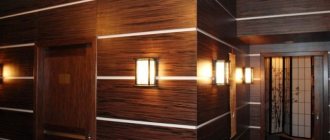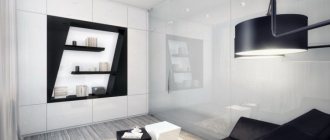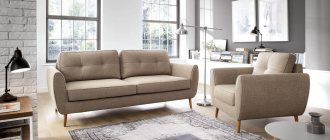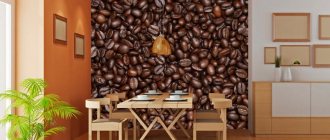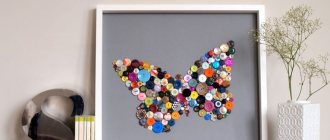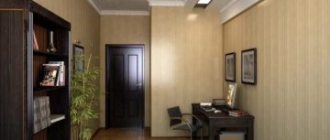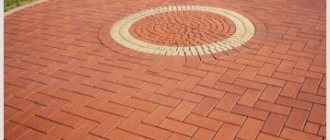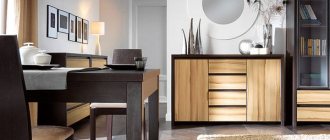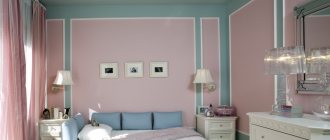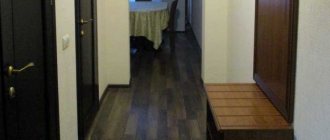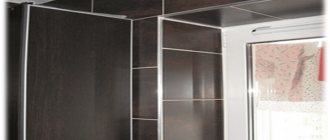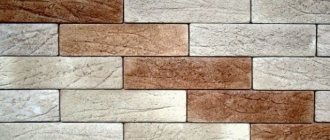Finishing the facade of a country house is traditionally considered a costly undertaking. Especially if you want to give the house solidity by decorating it with facing brick or natural stone. Often this dream remains unfulfilled, as soon as the developer finds out the price tag for this work, the cost of the material and the requirements for the construction of the house. After all, not every wall can support the weight of natural stone. For heavy brickwork, it is necessary in advance, before the start of construction, to calculate the bearing capacity of the base and the strength of the foundation on which the additional load will fall.
Therefore, many thrifty owners are looking for a way to save money. One option would be to decorate the facade with decorative textured tiles made of concrete - artificial stone. And although the price for this material cannot be called budgetary, you can reduce costs by doing all the work yourself, which we will talk about in this article.
So, you will find out:
- How to insulate a house and install decorative facade tiles.
- What nuances need to be taken into account.
- Which wall “pie” options are correct.
Advantages
First of all, you need to understand why this is needed. The Internet is full of photos of façade decoration with tiles, with a wide variety of variations.
The first thing people think about is appearance. It is quite natural, because even the most ordinary tiles can change the appearance of a very dull and unremarkable building. For such finishing, tiles made of durable ceramics and its varieties are used. The final result and its durability depend on its quality, which is very important.
Now I would like to talk about the advantages of such cladding. First of all, tiles for finishing the facade of a house are good due to a certain level of thermal insulation, in particular, frost resistance.
When it comes to exterior decoration, you need to select materials that will not only affect the appearance of the building, but also play an important role in durability, as well as in protection from natural conditions. In colder regions, building insulation is actively used using polystyrene foam and similar materials that have poor heat transfer.
However, frost resistance is important not only for protecting the building, but also for the strength of the cladding - poor quality tiles rarely survive the first winter.
All tiles that are at least average quality will be strong enough to withstand basic physical damage. This result is achieved through heat treatment, which is carried out at temperatures above 1000 degrees Celsius.
All together creates the durability factor. This is a very conventional designation, which can roughly tell you how many years a certain type of coating will last you.
By the way, recently finishing facades with clinker tiles has become increasingly popular. This is partly due to the fact that there are many types of it that copy brickwork - one of the most popular materials in the construction of private houses.
Characteristics of facade tiles
Whatever material the facade tiles are made from, they have general quality indicators. It is thanks to them that a unique, completely new external facade of houses is created and external facades become attractive.
An example of façade finishing with decorative tiles
Peculiarities:
- has a high level of strength;
- is a lightweight material;
- increased level of hardness;
- not subject to fire;
- has a very low level of water absorption. Since water cannot penetrate inside this material, and when it flows, it washes away dust and other contaminants from its surface without disturbing the structure, the service life increases;
- is an environmentally friendly material;
- easy to clean;
- not subject to aggressive influences from external irritants;
- frost resistance;
- has a wide range of colors and different geometric shapes.
Using this finishing material, the external facade of the house can be decorated in almost any style. It will not be difficult to implement any design solutions.
Photo of finishing a house with facade tiles
Installation of facade tiles
Installation of clinker tiles
The quality of the result obtained, as is known, depends not only on the material, but also, directly, on the installation work carried out. Of course, you can lay the tiles yourself. Especially if you have certain knowledge and skills.
Otherwise, it’s better not to start. Neither instructions nor videos as a visual aid will help you with this. In this case, it is better, naturally, to entrust all upcoming work to specialists.
But, if you decide to transform your home yourself, then initially you should complete all cosmetic measures and only then start working with tiles. However, it is not advisable to install it during rain or high humidity.
During the work process, you will need tools that you should stock up on in advance. This:
- glass cutter;
- tile cutter;
- long wooden bars;
- a piece of chalk;
- pencil;
- notched and rubber spatula;
- tape measure, trowel;
- wide knife, plumb;
- level, sharpening stone;
- basin or bucket of water;
- hacksaw and blade for it, rubber gloves.
The entire process of laying tiles consists of two main stages:
- Preparatory.
- Directly laying tiles.
The preparatory stage involves preparing the surface that will be covered with exterior facade tiles for work - leveling.
Laying tiles is the final stage.
It can be attached in two ways:
- using fasteners;
- with the power of special glue.
Tile laying process
Glue is used if the façade tiles do not have special fasteners for mechanical fixation. Although the material itself is relatively light, it still has a certain weight. Therefore, the adhesive layer should be approximately 0.5 centimeters.
The second method is mechanical, using a fastening system. You can lay facade tiles on almost all types of surfaces, since the fastening system allows this.
The beginning of installation in this case is the installation of the sheathing (can be an edged board or a galvanized profile). The sheathing frame must be secured in a position vertical to the ground. The internal elements are arranged in parallel.
The fasteners are chosen depending on the surface on which the tiles will be attached, provided that the facade is brick, dowel-nails (up to 1.4 cm) are used. If the technology for building a house is permanent formwork, use a frame anchor (1.52 centimeters).
In this case, a hydraulic level is used, with the help of which an even horizontal mark is created around the circle of the facade being repaired. It makes it possible to fasten the material with self-tapping screws. Installation of tiles begins from the bottom of the building upward, from the corner. The first facade tile is fastened with four self-tapping screws, all subsequent tiles are fastened with two self-tapping screws.
If the tile has embedded tiles, the second row of its laying must necessarily be superimposed on the embedded tiles of the first row and only then it is secured using dowel-nails. Provided that wall insulation is provided, the tiles are installed through it. Then use longer nails.
Thus, you get the desired result that can please you for many years.
Flaws
There are many more advantages of tiles than can be said in one article, but what about the disadvantages? Although they are few, they still exist.
First of all, the choice of material. We considered this a disadvantage, because without experience it is quite difficult to buy high-quality tiles for facade finishing.
It is better to buy from reliable sellers who provide detailed information and technical documentation that should accompany the cladding material. Without this information, it is almost impossible to select tiles to suit your climate and weather conditions.
At the same time, it is important to take into account even the most unusual little things, such as the presence of a reservoir, river or lake nearby, because this affects the overall level of humidity, which increases greatly in the summer, and we are not talking about the cold that will come from it in the winter. That is why the price of finishing facades with tiles differs from object to object.
This also includes installation. If you want the tiles to be installed not only beautifully, but also with high quality, you will need to find a specialist for this type of work.
At the same time, larger tiles require additional fastenings, and therefore the adhesive solution itself will not be enough, and cement mixtures cannot be used for outdoor work.
We’re not talking about the complex compositions that parts make when decorating a facade with ceramic tiles, and this also requires certain skills, and you definitely wouldn’t want to hire someone who will study at your facility.
Insulators ShF-20G- Production of plastic for finishing
How and how to caulk a timber house with your own hands: materials and step-by-step instructions
Main types of facade tiles
Facade tiles are a wide range of materials made from different raw materials, having various properties and installation methods.
The most famous types are:
- Clinker room. Fully corresponds to clinker bricks in terms of source material and manufacturing methods. The only difference is the thickness, which makes installation easier and much more economical. It has high strength, wear resistance and durability.
- Vinyl. Installed dry (using self-tapping screws). It is light in weight, making it possible to finish walls with low load-bearing capacity (for example, in frame houses). Well suited for creating ventilated facades, easy and quick to install.
- Concrete. It has two installation methods - dry and wet. The largest samples are attached using the dry method, while smaller ones are attached using the wet method. The material can be made independently, which makes repair and restoration work convenient. There are many design options, with imitation of any type of material - the main condition is the presence of the desired shape, which can be copied from a natural section of the wall.
- Porcelain tiles. Another name for the material is artificial stone. It has high strength, as it is created from a melt of a natural composite. It is possible to produce panels with a glossy or matte finish, smooth or rough surface. When installing, both methods are possible, but the most common dry installation method is using clamps. Ideally suited for creating ventilated facades, the gaps between the tiles help to increase air flow under the cladding.
- Agglomerate. Tiles created from crumbs of natural types of stone - marble, granite, quartzite. Externally, it differs little from thin panels of natural stone, but allows you to create a coating of a very high decorative level.
- A natural stone. Thin panels of natural stone create a highly artistic finishing layer. Despite all the performance and decorative qualities, the cost of such finishing is very high and is not affordable for everyone, which is a significant limiting factor.
- Terracotta. One of the most ancient external claddings, made from kaolin clay by firing at a temperature of about 1000°. Over time, the coating gets wet and peels off, which requires periodic maintenance - coating with water-repellent compounds. The decorative qualities of terracotta tiles are very high, creating the appearance of an old house in the Mediterranean style.
There are also such types as: basement, Canyon, ceramic.
Each type of tile has its own varieties, which expands the range and helps to better meet the needs of users.
Varieties
Over the past 10 years, a real variety of types of tiles for facade finishing has emerged. When choosing, you will have the opportunity to choose texture, size, color, material and other properties.
Thanks to a very generous color palette, you can create a unique composition using the same type of tile. In this regard, everything depends more on your imagination or the designer’s inspiration.
Tips for choosing clinker tiles
When choosing clinker tiles, first of all you should pay attention to the density of the material. The higher it is, the stronger and more resistant to external manifestations the cladding of the house will be.
When choosing a color, you should consider the color of the roof. A successful combination of coloring of the facade and roof will enhance the decorative effect of the cladding, emphasize the expressiveness of the material and decorate the appearance of the house.
It is recommended to use different colors, this will help make the facade more expressive, standing out, for example, like a brick.
Before installation, you should mix the material from different packs - this way you can avoid discrepancies in the color scheme and even out the shades of the material over the entire area of the facade.
Molding of facade tiles
The forms are placed on a working vibrating table and filled with the finished solution using a trowel - a narrow mason's trowel. If the solution does not include natural crumb fillers and dye, then pigment is first added to the molds with a layer of 1-1.5 cm, after which they are gradually filled flush with the edges with the main composition. This allows you to get a tile with a front surface uniformly painted to a depth of 1.5-2 cm.
Considering the high cost of a vibrating table and the laboriousness of making it yourself, when molding tiles you can do without it. If you install a sheet of steel or chipboard (chipboard) on two supports, and place polyurethane forms on it, then the mixture can be compacted in the forms by tapping the sheet from below with a hammer.
After compacting the mold, being careful not to deform it, transfer it to a horizontal surface for two days. During this time, the products are not moved or touched.
Types of brick-like facade tiles
Brick facing slab is equally suitable for old buildings, as well as for new, newly built buildings. Facade tiles are designed to create a ventilated cladding, which ensures air circulation between the cladding and the wall.
This method of fastening ensures the creation of a normal microclimate in the room. Some types of brick tiles are attached using an adhesive solution.
IMPORTANT! The variety of brick-like facade slabs is determined not only by a wide range of color solutions, but also by the classification of this type of cladding according to the material of manufacture. In addition, collections of different types of tile products can be of different sizes, shapes, textures.. There are several types of brick tiles
There are several types of brick-like facing tiles.
Ceramic
One of the most popular types of slabs for facade finishing. The material contains clay, mineral components and sand. The slabs are formed, then processed through firing and undergoing glazing stages. The surface can have a matte texture, glossy, embossed or smooth.
Ceramic tiles require leveling the surface of the walls - this is one of the disadvantages of cladding. In addition, accumulated dust in the reliefs of the facing surface and in the joints between tiles is quite difficult to remove.
Clinker
This type of brick slab is prepared by long-term firing of clay elements. Under high temperature, the material literally melts, due to which the material is endowed with characteristic qualities:
This type of cladding is suitable for installation in places with any climate. Clinker cladding is not difficult to install; it is quite easy to install. It resembles natural brick, but is quite thin (up to 1.5 cm).
The disadvantage of this type of cladding is the fragility of the material during installation and transportation work. In addition, this type of cladding is quite expensive.
Porcelain tiles
The basis of this artificial material is mineral components: clay, sand, feldspar. The facing material has the following characteristics: strength, frost resistance, durability.
The disadvantages of porcelain stoneware are significant weight and high cost.
Pressed concrete
Concrete brick slabs are produced by pressing concrete mixtures with additives: sand, mineral powder, cement, plasticizers. The mixtures are placed in molds and compacted by vibration. This ensures the strength of the material. Concrete slabs can be matte, glossy, or porous.
Concrete coatings are strong, impact-resistant, fairly light and durable. However, this type of cladding slab is not recommended for use in cold climatic regions due to its inability to adapt to temperature changes.
Plaster
Brick-like gypsum tiles are fragile, although they do not differ in appearance from similar materials. Most often, this type is intended for adhesive fastening. But in most cases, gypsum tiles are used for indoor installation. Gypsum facades are ineffective due to insufficient strength.
Facade tiles also differ in the following types:
- basement;
- under brick;
- basement
Porcelain tiles
It is considered the best alternative to natural stone today. It surpasses it in terms of strength and frost resistance. The slabs usually have a square shape with a side length of 50-90 cm, which is very convenient for cladding - the work is done quickly.
The tiles are not laid on the mortar, they are mounted on the lathing or glued to the wall. It can be used to finish wood surfaces.
The texture can be different - smooth or rough surfaces with imitation stone. Most of the characteristics are similar to natural stone, with one main advantage - an affordable price.
